
Gel manicure devotees love them because gel nail polish stays on nails without chipping or peeling for weeks. That's huge — especially for moms who know that regular nail polish just isn't cut out to survive the mom life. The problem is that while gel manicures are low-maintenance in terms of staying on, they are super high-maintenance when it comes to taking them off. Gel nail polish just doesn't want to come off even when you want it to, which is why most gel manicure devotees don't remove it themselves and instead head back to the salon. But that's not practical, especially right around NOW. That's why we thought it would be a good time to share how you can safely remove gel nail polish at home.
More from MamásLatinas: Celebrity-inspired manicures
Be warned that it's not a quick process, but it definitely beats staring at your no-longer-wanted polish or trying to pick and peel it off. All in all, you're going to need to set aside around 30 minutes, which is really not that much time in the grand scheme of things. The supplies you will need are minimal and easy to get. You probably already have everything or most of what you need at home. OK, now all you need to do to is read our step-by-step directions.
What supplies will you need?
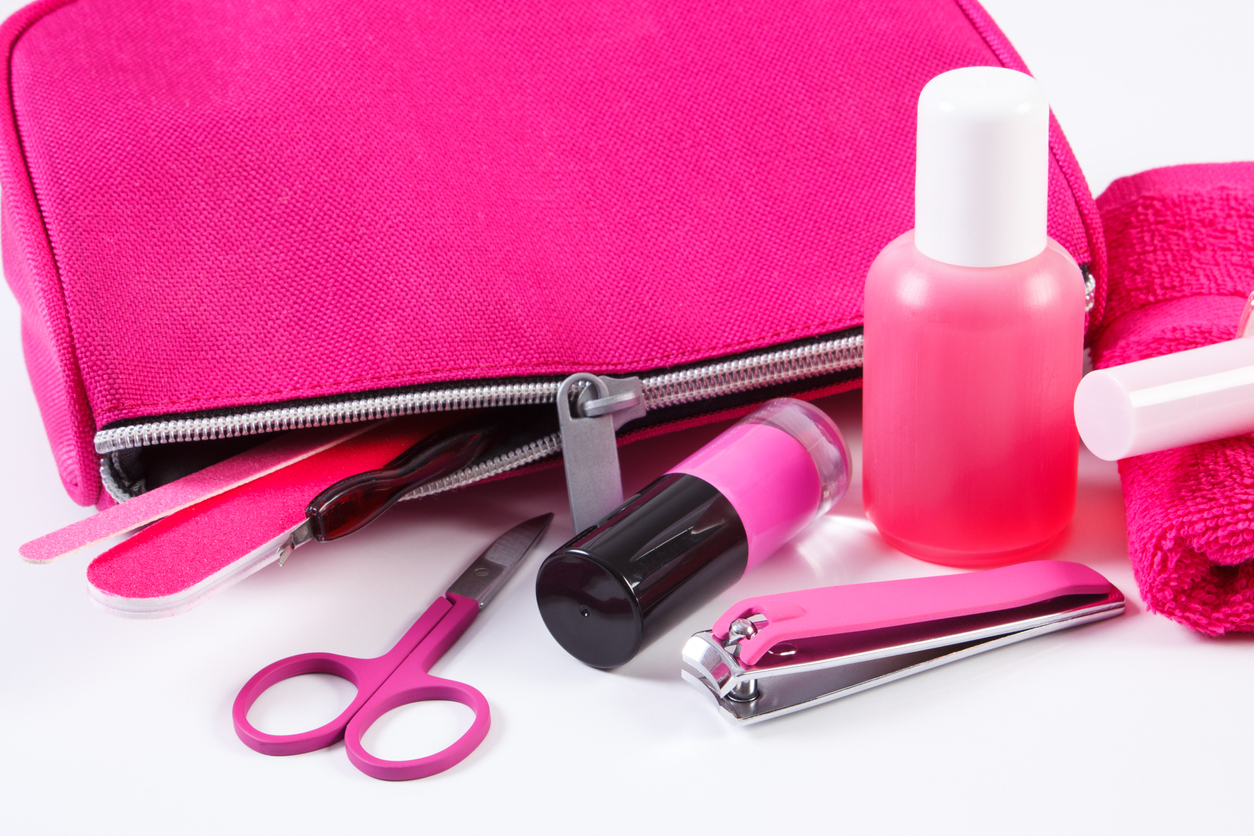
There are various methods that you can use for removing nail polish at home. For the one we're sharing, you'll need a nail file, cotton balls, acetone nail polish remover, foil paper, and a nail stick. You may also want to include some cuticle cream or thick moisturizer to protect your skin.
Be sure to set yourself up in a well-ventilated space.

Why? You can't really remove gel nail polish quickly. The whole process will take you about 30 minutes minimum, which means that you could be breathing in acetone fumes for that long, and although acetone is useful for removing nail polish, it's not so great for your lungs. Safety first!
What exactly is acetone?
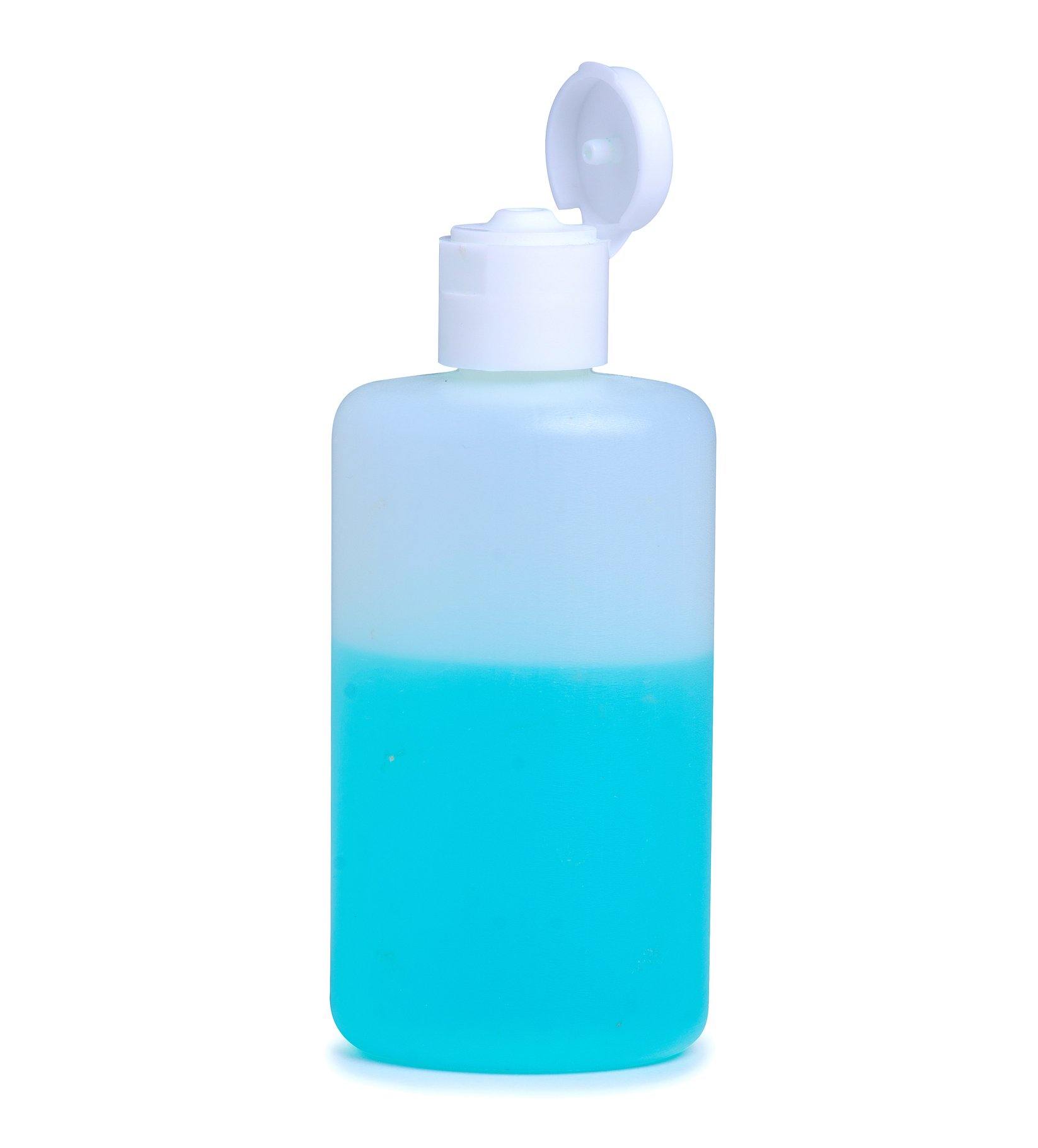
Acetone is basically a chemical that is used in products like nail polish remover and paint remover. It works as a solvent that breaks down nail polish and paint. You should always follow the manufacturer's instructions when using a product with acetone to avoid issues like nose, throat, lung, and eye irritation.
A note on which kind of acetone to use.
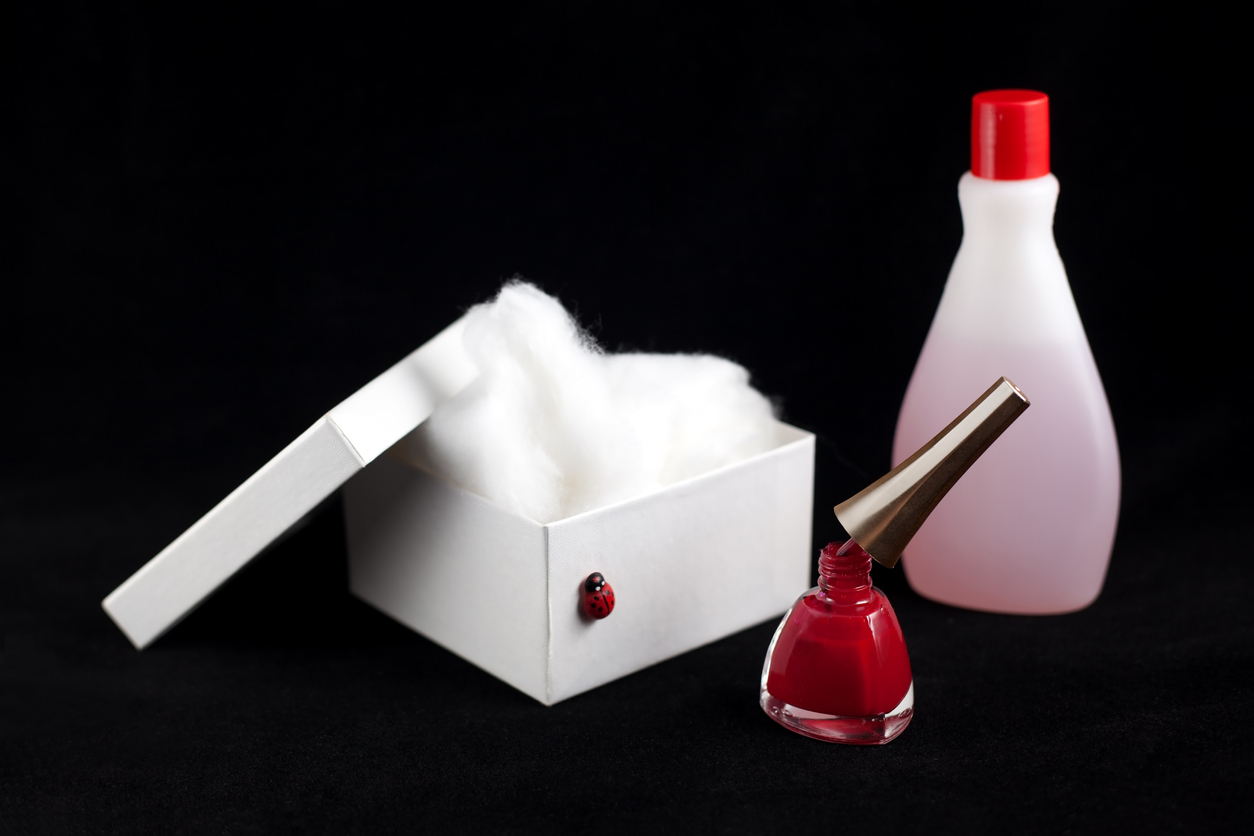
There are a ton of acetone nail polish removers on the market to choose from, and you may already have some at home. For removing gel nail polish, you want to avoid any formulas that include "moisturizing" ingredients. Sadly, whatever makes them moisturizing also makes them less effective at removing gel polish.
Time to file.
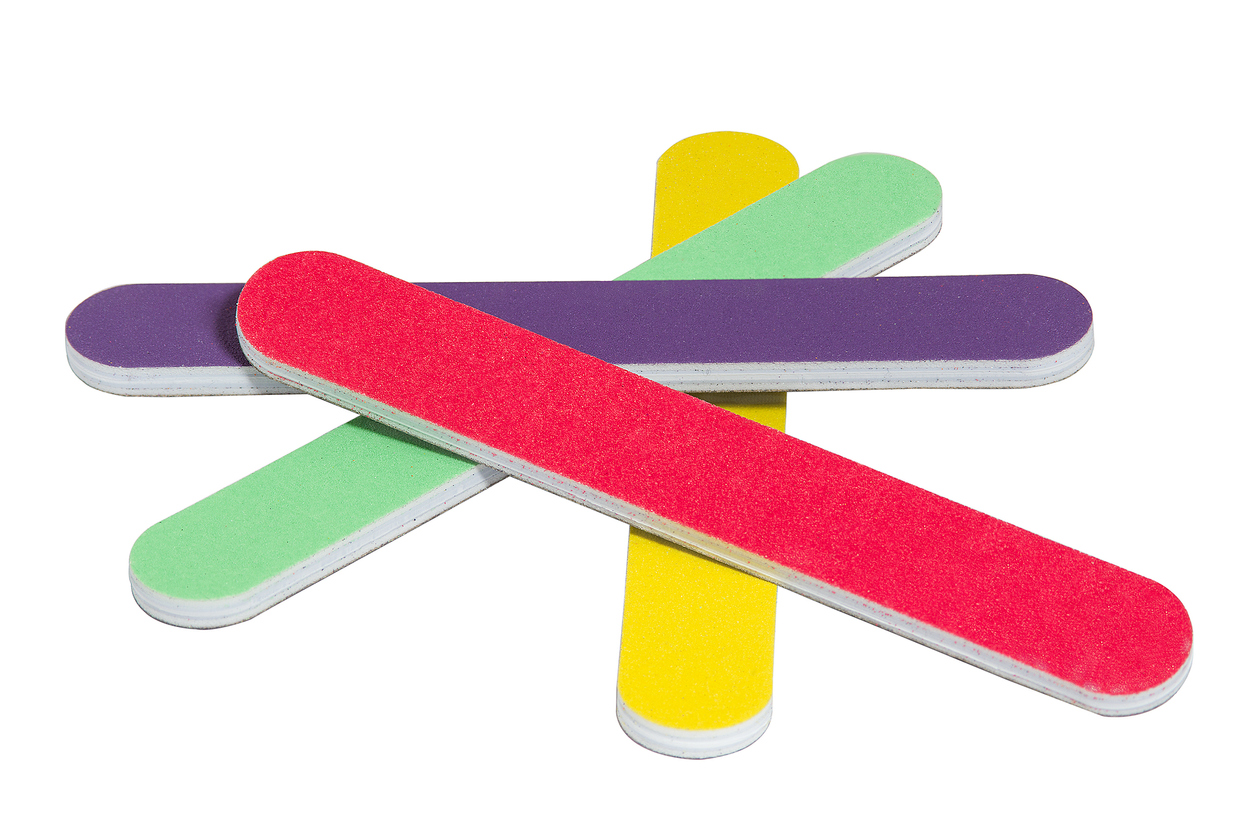
Once you have all your supplies set up in a well-ventilated area, it's time to start filing. But you're not going to file your nails to shape them. What you want to do is file the top layer of your nail polish. It's like you are sanding it down. Do this gently. You aren't trying to sand off all the polish. You are just trying to get rid of the shine.
Next? Bust out the foil paper.
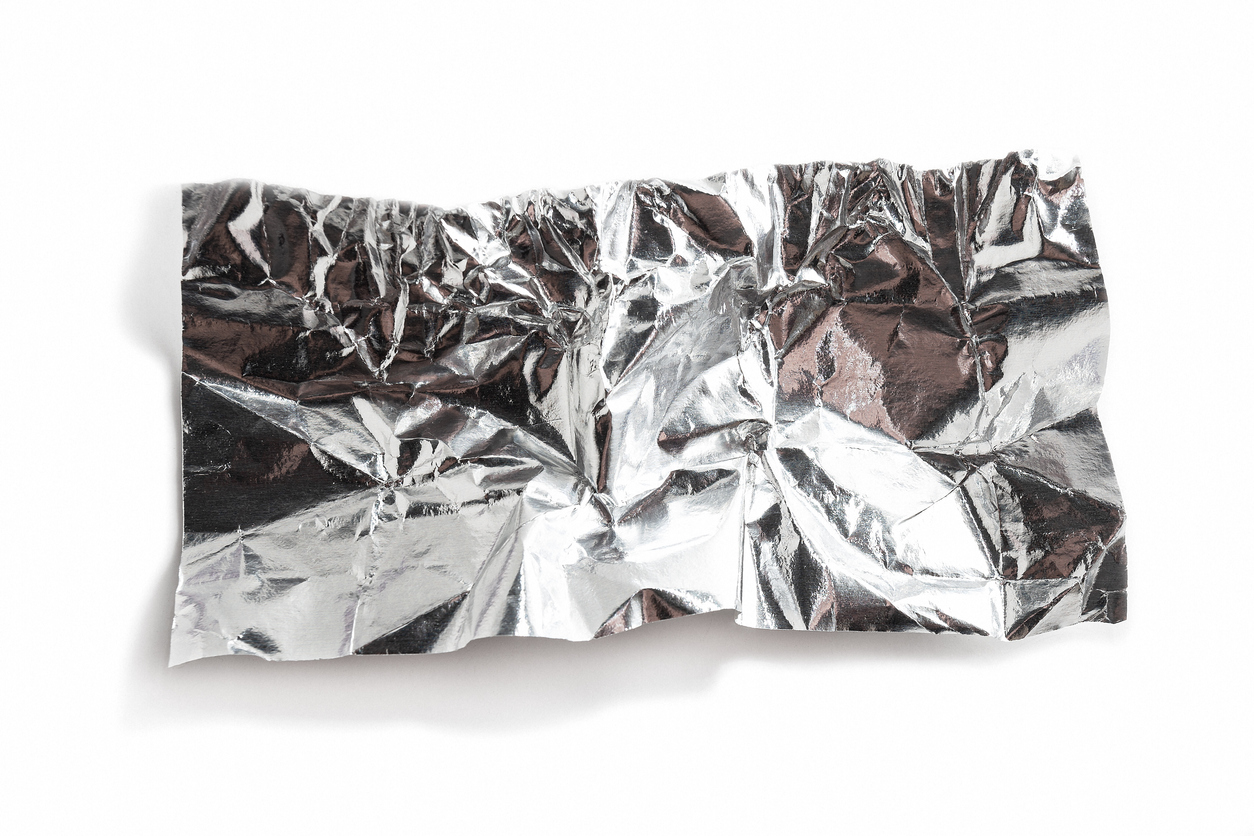
You are going to need at least 10 squares of foil paper to wrap around your fingertips. You might want to have a few extra squares just in case you mess up once or twice. Go for 3-by-3-inch pieces of foil paper squares, because they need to be big enough to secure a cotton ball to each of your nails.
Optional: Protect the skin around your nails.
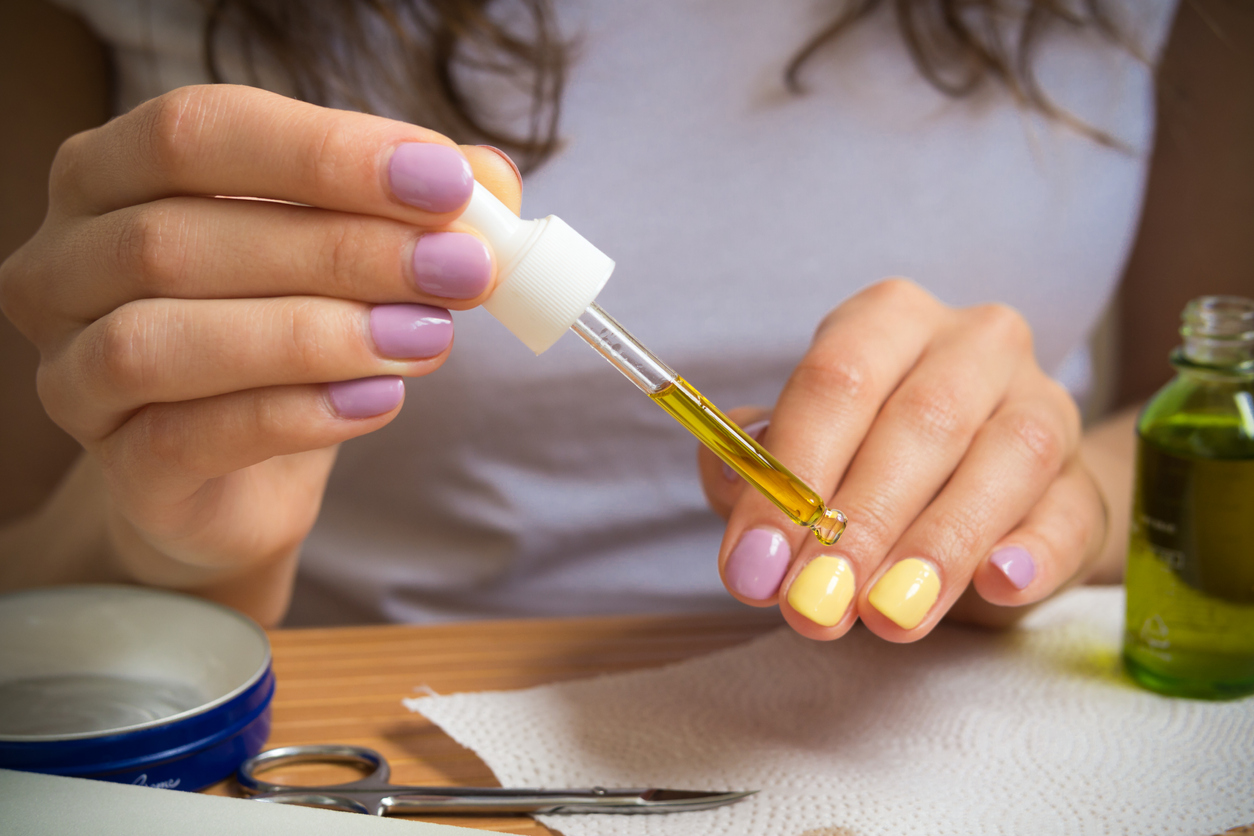
If you have cuticle cream or a thick moisturizer, now would be the time to apply it to the skin surrounding your nails. Acetone can be very drying, and the cuticle cream or moisturizer can give your skin a bit of protection that it wouldn't otherwise have.
Then? Grab the cotton balls.
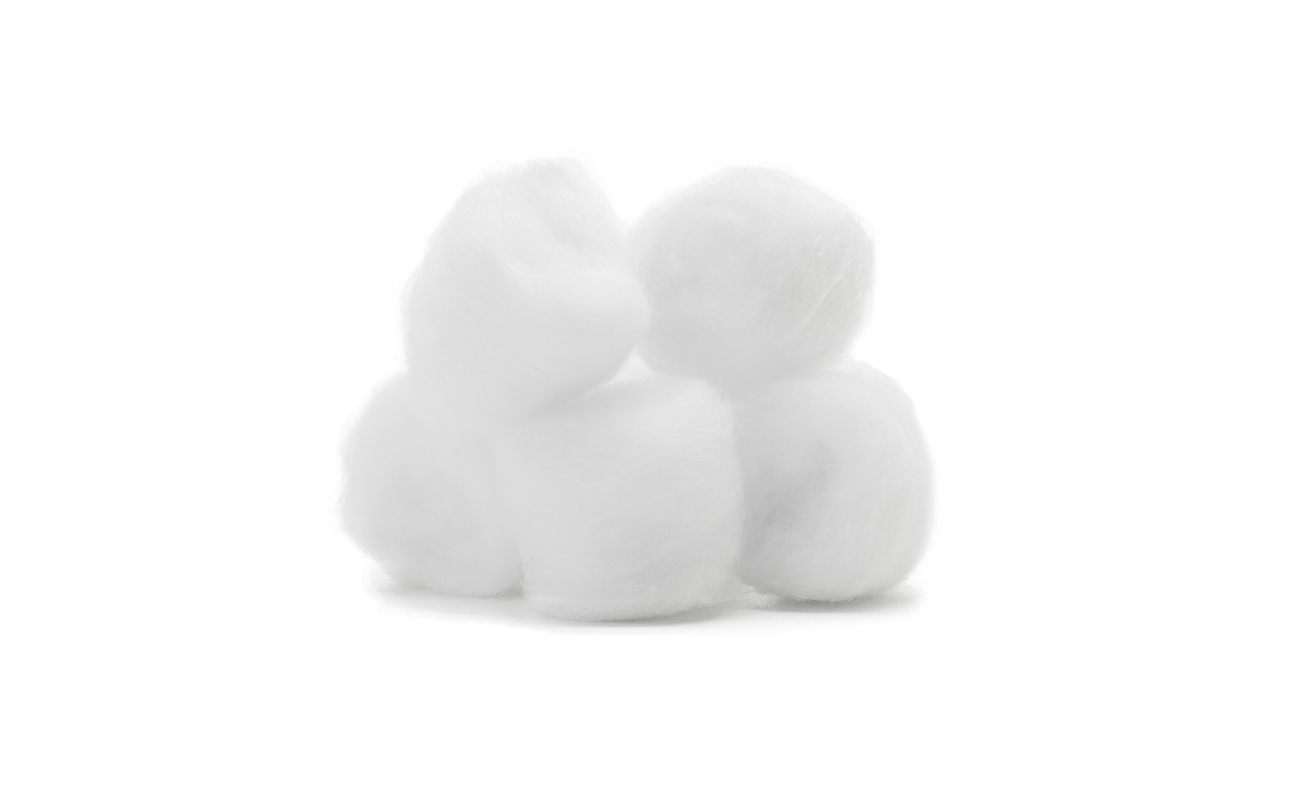
Take one cotton ball and saturate it with your acetone polish remover. You want that cotton ball to be soaked through with acetone. Make sure you are using cotton balls and not cotton pads. Cotton balls can absorb more acetone than cotton pads and won't dry out as quickly.
Time to apply the soaked cotton ball to your fingernails.
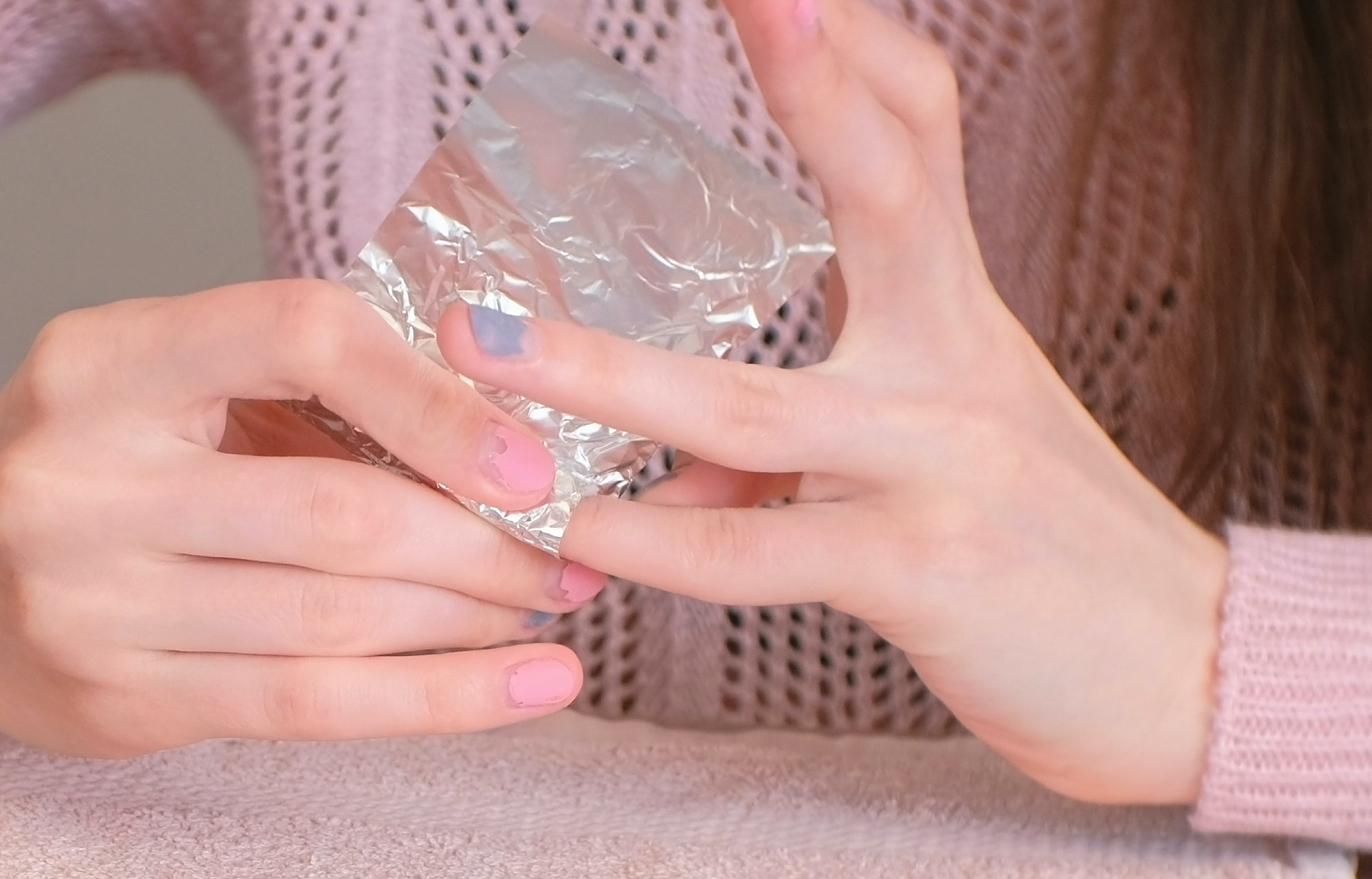
Apply an acetone-soaked cotton ball to your pinky nail, then secure it in place using one of your squares of foil paper. If you are right-handed, wrap the nails on your left hand first. If you are left-handed, wrap the nails on your right hand first.
Repeat the process for all 10 nails.
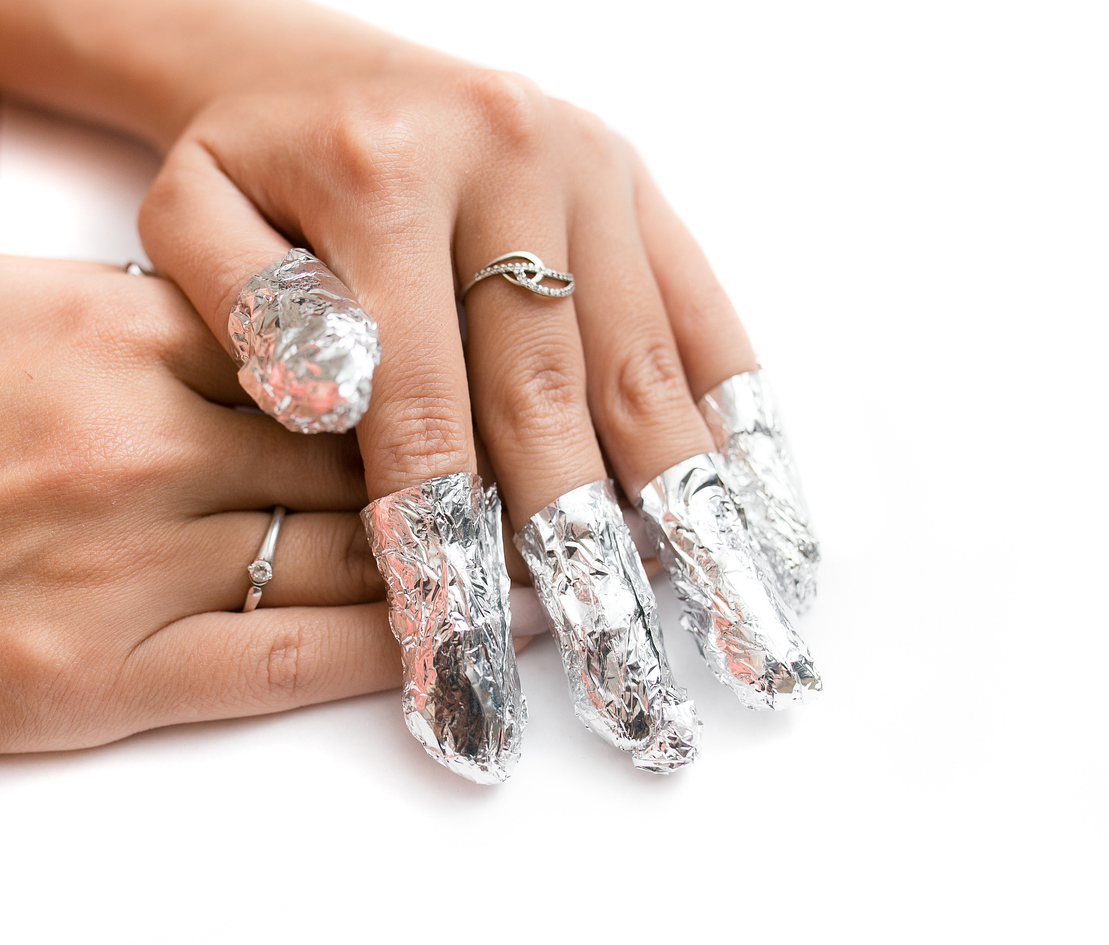
You are going to apply and attach an acetone-soaked cotton ball to each nail. It will get a little awkward at times; perhaps you can get someone at home to lend you a hand. But it is possible to wrap all your nails yourself. Just go slow and have some extra squares of foil paper ready in case you need them.
Sit back and relax for a bit.

Guess what? Once your fingertips are all wrapped up, you get to sit back and relax, because there isn't much you can do with foil paper on your fingertips. You are going to want to let your nails soak up the acetone for at least 10 to 15 minutes.
Time to check!
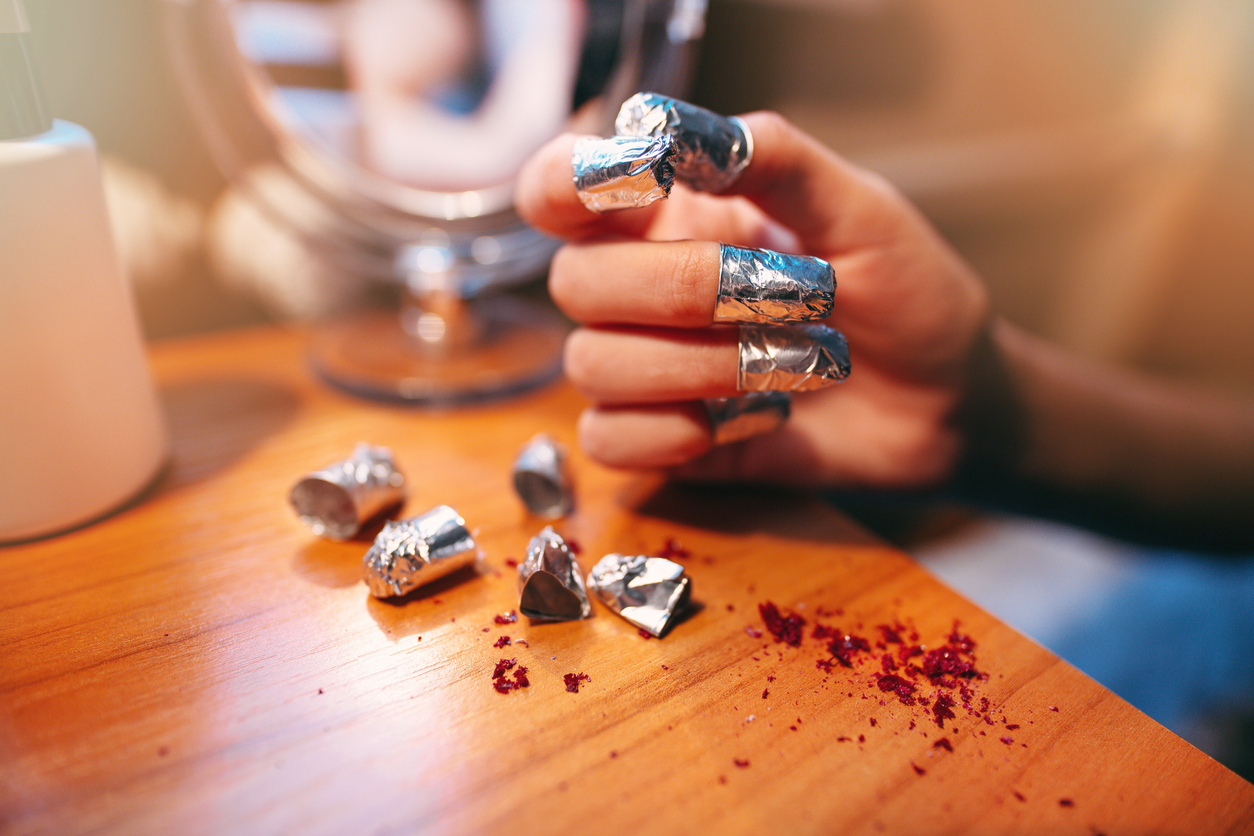
After 10 to 15 minutes, check out the first nail you wrapped. The gel polish should look like it is lifting off your nail and ready to fall off. You should be able to remove it with very little pressure. If that's not the case, rewrap the nail with the acetone-soaked cotton ball and foil paper, then wait another 5 minutes.
Time to lose the foil tips.
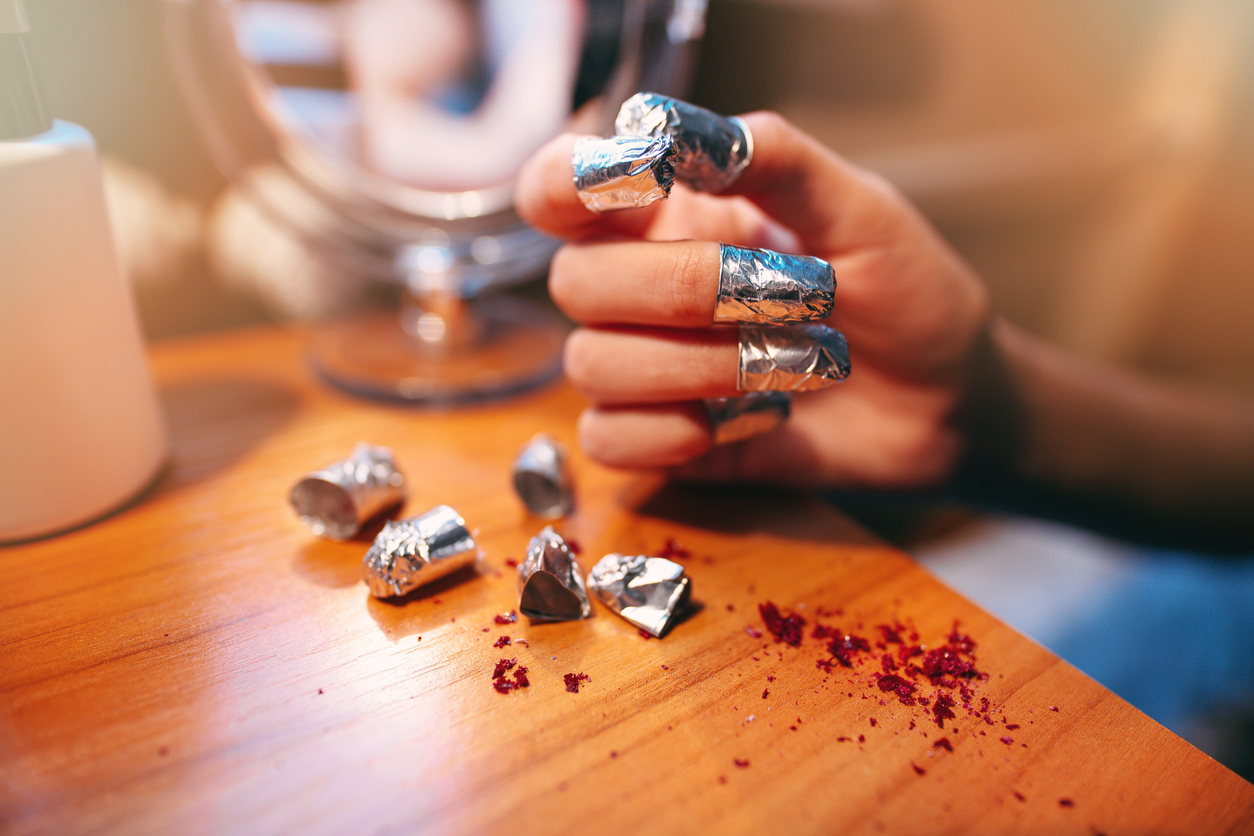
Once the gel polish on all your nails has loosened up, you are going to remove the foil paper and cotton balls from all your fingertips. You can use the cotton ball on each of your nails to apply a small bit of pressure to get off as much of the polish as possible.
Use a nail stick to remove any leftover gel polish.
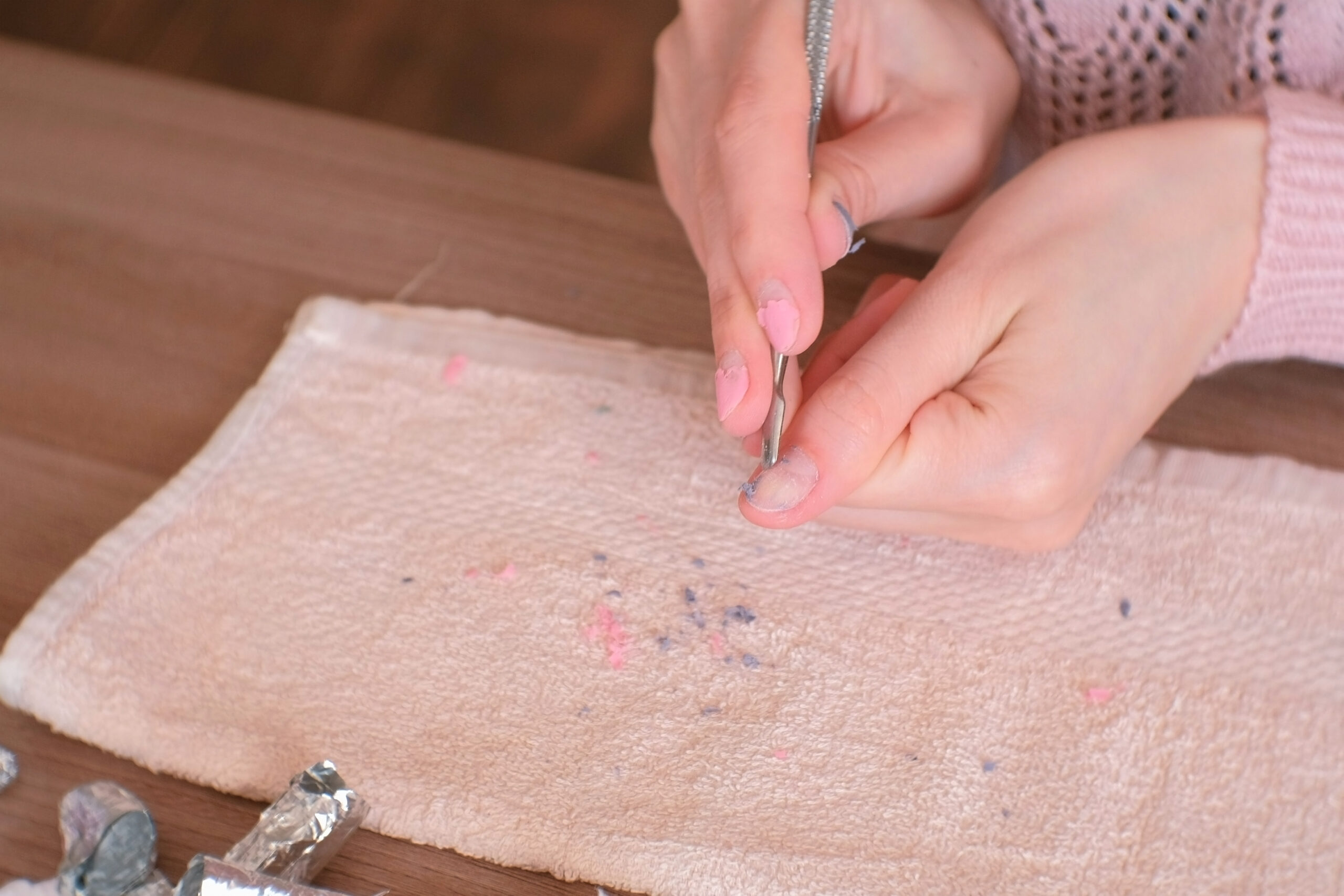
The key here is to be gentle; you want to remove any remaining polish without damaging your nail. It's best if you use a wooden nail stick because they are much gentler on your nail than metal ones. Gently work the nail stick under any pieces of remaining gel polish to lift it off your nail. In other words, lift, don't scrape. Scraping can damage your nail bed. If the nail polish won't lift off, then that nail needs to be rewrapped with an acetone-soaked cotton ball and foil paper until the polish loosens up.
Please, throw away used wooden nail sticks.
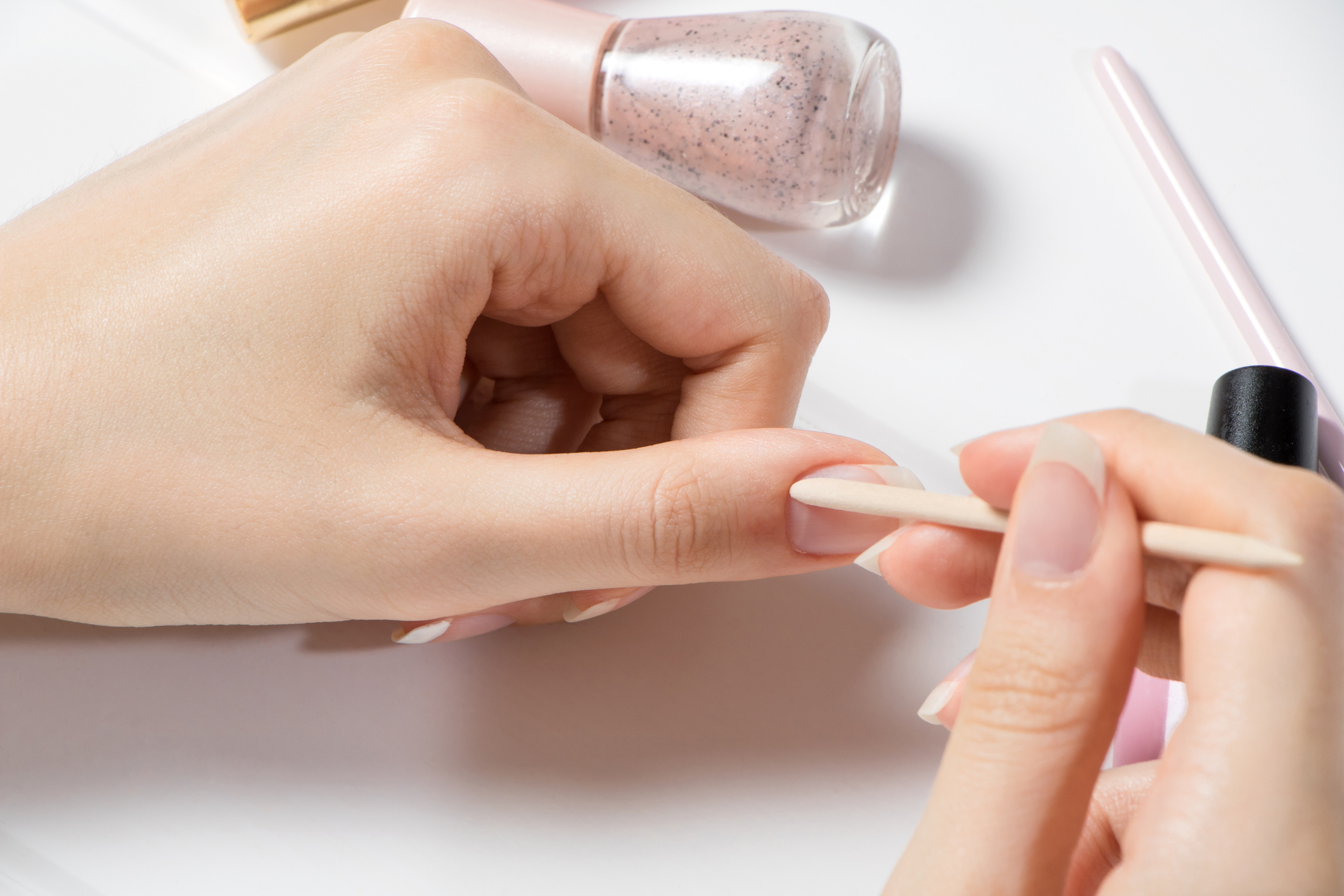
If you used a wooden nail stick, please get rid of it. They are not meant to be reused. Wooden nail sticks can become breeding grounds for bacteria. They are never meant to be shared with others or reused. They are a one-and-done kind of item.
Optional: Consider moisturizing your nails as the finishing touch.
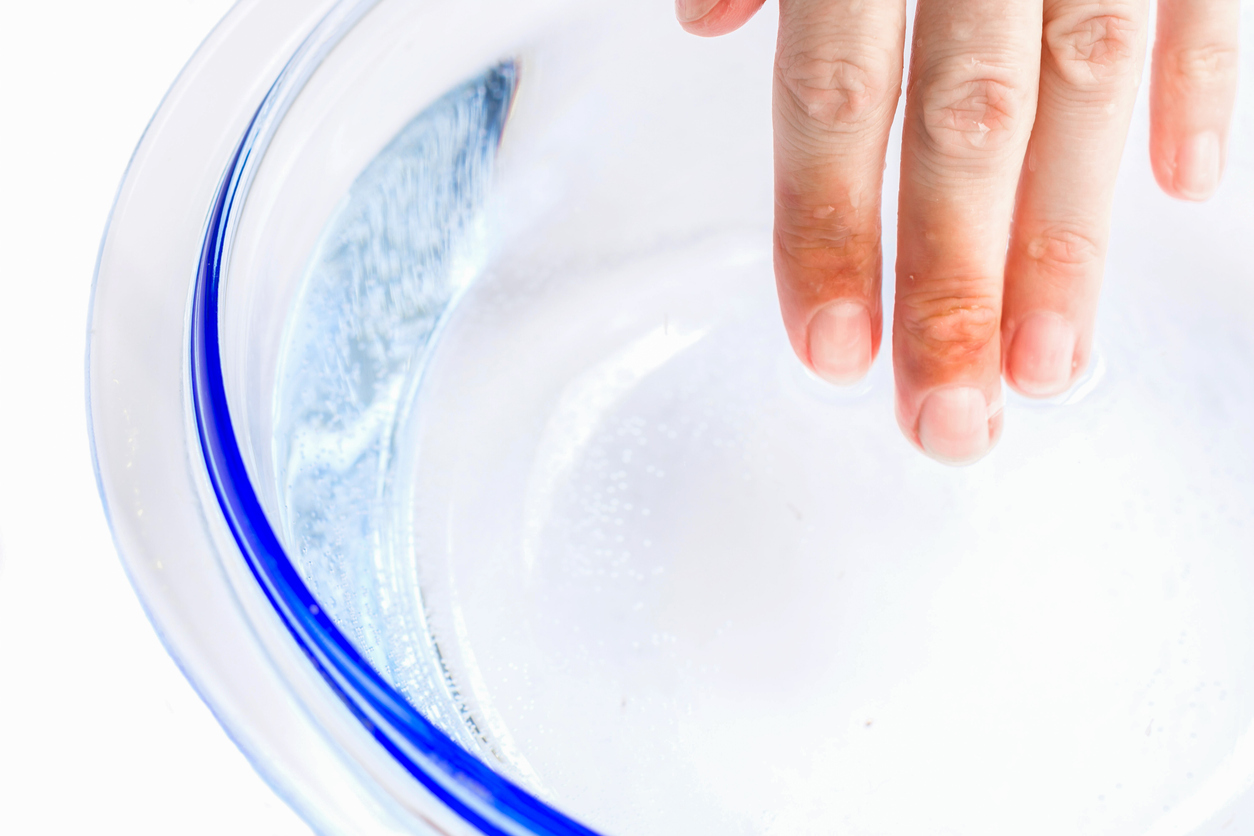
Your poor nails have been sucked dry by acetone. Why not give them back a bit of moisture by soaking them in a coconut oil nail bath? Dissolve some coconut oil in warm water, and then let your nails soak in the mixture for about 5 minutes. Once you are done soaking, you can apply a cuticle oil to give your nails even more hydration.




